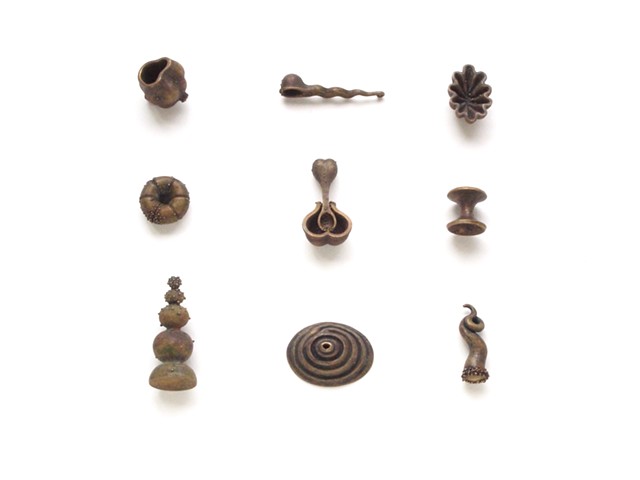My work investigates the ambiguity and power of hybrid and abstract form and examines the relationship between humans and their artifacts. I’m driven by the question of how the emotion of desire can be made tangible in sculptural form.
The originals for the metal pieces are carved from solid blocks of paraffin wax; the reductive process allows for a mix of intention and intuition while refining the form. Most pieces are between one and two inches in size. The small scale invites intimacy with the viewer and the carving must be meticulous to reward close inspection. Using the lost wax method of casting means that pieces are occasionally destroyed in the process; the potential for loss makes the survivors more precious.
The immutability of bronze enables the pieces to be handled, speaking to the relationship our ancestors had with the objects they created for both sacred and prosaic uses. Visiting museums as a child in Scotland, I was captivated by ancient Pictish objects with didactics that read only “use unknown, possibly ritual”. Inspired by those mysterious objects and their unknown makers, I imagine a matriarchal Celtic tribe, a society where the women were the artisans and spiritual leaders. They passed their knowledge to their daughters with objects that imply ritual, suggest flora and fauna, or hint at the complexity of social and intimate relationships.
